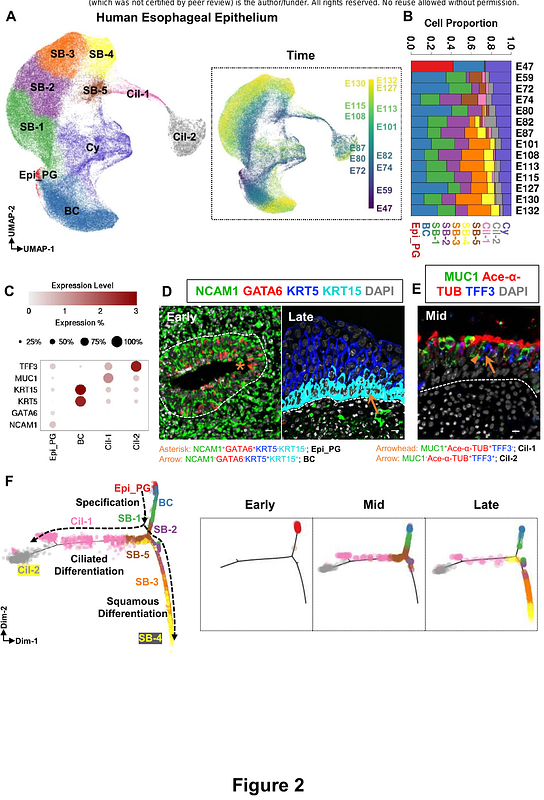A Spatiotemporal and Machine-Learning Platform Accelerates the Manufacturing of hPSC-derived Esophageal Mucosa

A Spatiotemporal and Machine-Learning Platform Accelerates the Manufacturing of hPSC-derived Esophageal Mucosa
Yang, Y.; McCullough, C. G.; Seninge, L.; Guo, L.; Kwon, W.-J.; Zhang, Y. Z.; Li, N. Y.; Gaddam, S.; Pan, C.; Zhen, H.; Torkelson, J.; Glass, I.; Charville, G.; Que, J.; Stuart, J.; Ding, H.; Oro, A. E.
AbstractHuman pluripotent stem cell-derived tissue engineering offers great promise in designer cell-based personalized therapeutics. To harness such potential, a broader approach requires a deeper understanding of tissue-level interactions. We previously developed a manufacturing system for the ectoderm-derived skin epithelium for cell replacement therapy. However, it remains challenging to manufacture the endoderm-derived esophageal epithelium, despite both possessing similar stratified structure. Here we employ single cell and spatial technologies to generate a spatiotemporal multi-omics cell atlas for human esophageal development. We illuminate the cellular diversity, dynamics and signal communications for the developing esophageal epithelium and stroma. Using the machine-learning based Manatee, we prioritize the combinations of candidate human developmental signals for in vitro derivation of esophageal basal cells. Functional validation of the Manatee predictions leads to a clinically-compatible system for manufacturing human esophageal mucosa. Our approach creates a versatile platform to accelerate human tissue manufacturing for future cell replacement therapies to treat human genetic defects and wounds.